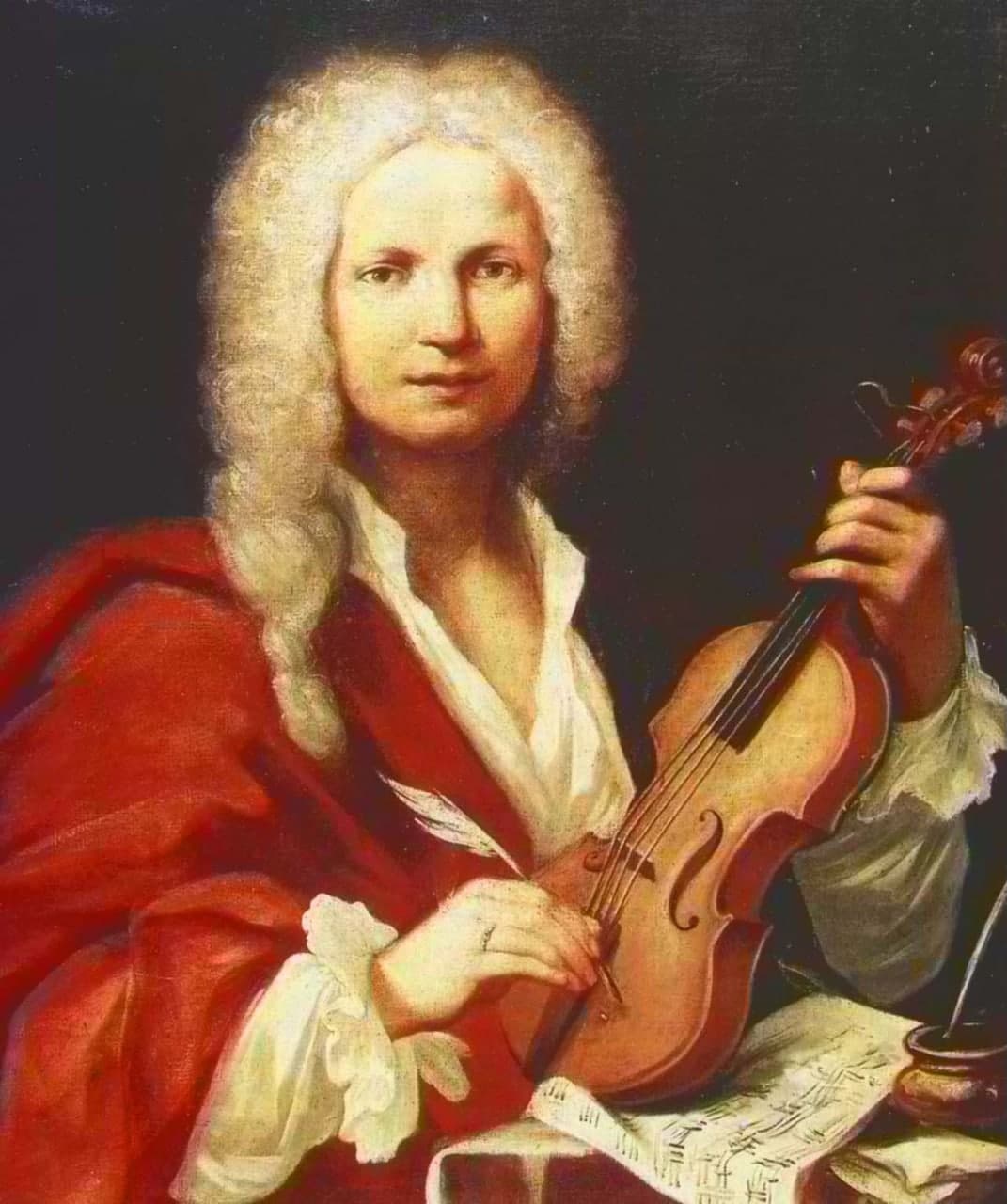The Church of the Pietà
ANTONIO VIVALDI learned to play the violin from his father and early demonstrated his great talent. He was soon admitted to frequent the musicians of the Doge's Chapel and perhaps here, but it is not certain, he also had lessons from the Chapel Master Giovanni Legrenzi; however, it is believed that the influences of this master were limited if we consider that he died in 1690 when Vivaldi was just 12 years old. There is no doubt, however, that Vivaldi benefited greatly from attending the musical environment of the chapel of San Marco at a very young age.
At the age of ten he was directed towards ecclesiastical life by attending his parish school, this as a consequence of the will of his mother who on the day of Antonio's birth, seeing the health conditions of her son, promised that if he survived he would become a priest.
He did not abandon music, indeed the skill with which he played the violin meant that already in 1696 he was employed as a supernumerary violinist during the Christmas services in the chapel of the Basilica of San Marco; this was his first public appearance as a violinist. At the same time he was part of the Arte dei sonadori group.
On 23 March 1703 he was ordained a priest and was immediately nicknamed the red priest for the color of his hair which, however, was hidden by the wig which was fashionable to wear in that period; he continued to live with his family and work closely with his father. Although young, his fame soon began to spread and in September 1703 he was hired as a violin teacher by the authorities of the Pio Ospedale della Pietà, where he began his activity on 1 December 1703 with a salary of 60 ducats per year; here he remained until 1720.
His relationship with the hospital's board of directors, judging from the few remaining documents, appears to have been fluctuating. Every year the leaders of the Venetian institute met to vote on whether or not to keep a teacher. Although Vivaldi was rarely put to the vote, in 1709 he lost his seat by 7 votes to 6. However, after practicing as a freelance musician for over a year, he was rehired at the Pietà in 1711, again following a vote by the institute's council. This was probably because the management had well understood its importance within the school. In 1713 he became responsible for the musical activity of the institute and in 1716 concert master. Vivaldi most likely continued to supply the Pietà with concerts and various compositions throughout his life, even in private form.
It is during these years that Vivaldi wrote much of his music, including many operas and also numerous concertos. In 1705 his first collection was published, but international fame was achieved with his first collection of 12 concerts for one, two and four violins with strings, L'estro armonico (Opus 3), which was published in Amsterdam in 1711, thanks to the famous hand of the publisher Estienne Roger, at the forefront of new printing techniques compared to the Venetian publishers Sala and Bortoli. Its release was publicized with an advert in London's The Post Man. These concerts were a resounding success throughout Europe and were followed in 1714 by La stravaganza (Opus 4), a collection of concerts for solo violin and strings.
In February 1711 Vivaldi and his father went to Brescia, where he gave his Stabat Mater RV 621, commissioned by the Congregation of the Oratory of San Filippo Neri. In 1718 Vivaldi began to move around very easily, but he seems to have never broken ties with the Pietà. From the records of the proceedings it is possible to see that between 1723 and 1729 he was paid to compose at least 140 concerts.
In 1717 or 1718 Vivaldi was offered the prestigious position of chamber maestro di cappella at the court of Prince Philip of Hesse-Darmstadt, governor of Mantua and a well-known music enthusiast. He therefore moved to the Lombard city and remained there for about three years.
This is the period in which he wrote The Four Seasons, four violin concertos representing scenes of nature in music; probably the idea of composing these concerts came to him while he was in the countryside around Mantua and they were a revolution in musical conception: in them Vivaldi represents the flowing of streams, the singing of birds, the barking of dogs, the buzzing of mosquitoes, the crying of the shepherds, the storm, the drunken dancers, the silent nights, the hunting parties (both from the point of view of the hunter and the prey), the frozen landscape, the children sledding on the ice and the burning of fires. Each concert is associated with a sonnet written by Vivaldi himself, which describes the scene depicted in music. They were published as the first four concerts of a collection of twelve: Il cimento dell'armonia e dell'inventione Opus 8, published in Amsterdam, in 1725, by Michel-Charles Le Cène, who had succeeded Estienne Roger in the publishing business.
At the height of his career, Vivaldi received numerous commissions from the noble and royal families of Europe. Opus 9, The Cither, was dedicated to Emperor Charles VI. Vivaldi had the opportunity to meet the emperor in person in 1728, when he went to Trieste to supervise the construction of a new port. Charles admired the music of the Red Priest so much that, as he himself later reported, he spent longer with the composer on this occasion than with his ministers in the space of two years. He awarded Vivaldi the title of knighthood, awarded a gold medal and extended an invitation to court in Vienna. For his part, the musician presented the emperor with an alleged copy of the manuscript of The Cetra. However, this collection of concerts is almost completely different from the one published with the same title, such as Opus 9: probably a printing delay had forced Vivaldi to put together an improvised collection of concerts as best he could.










